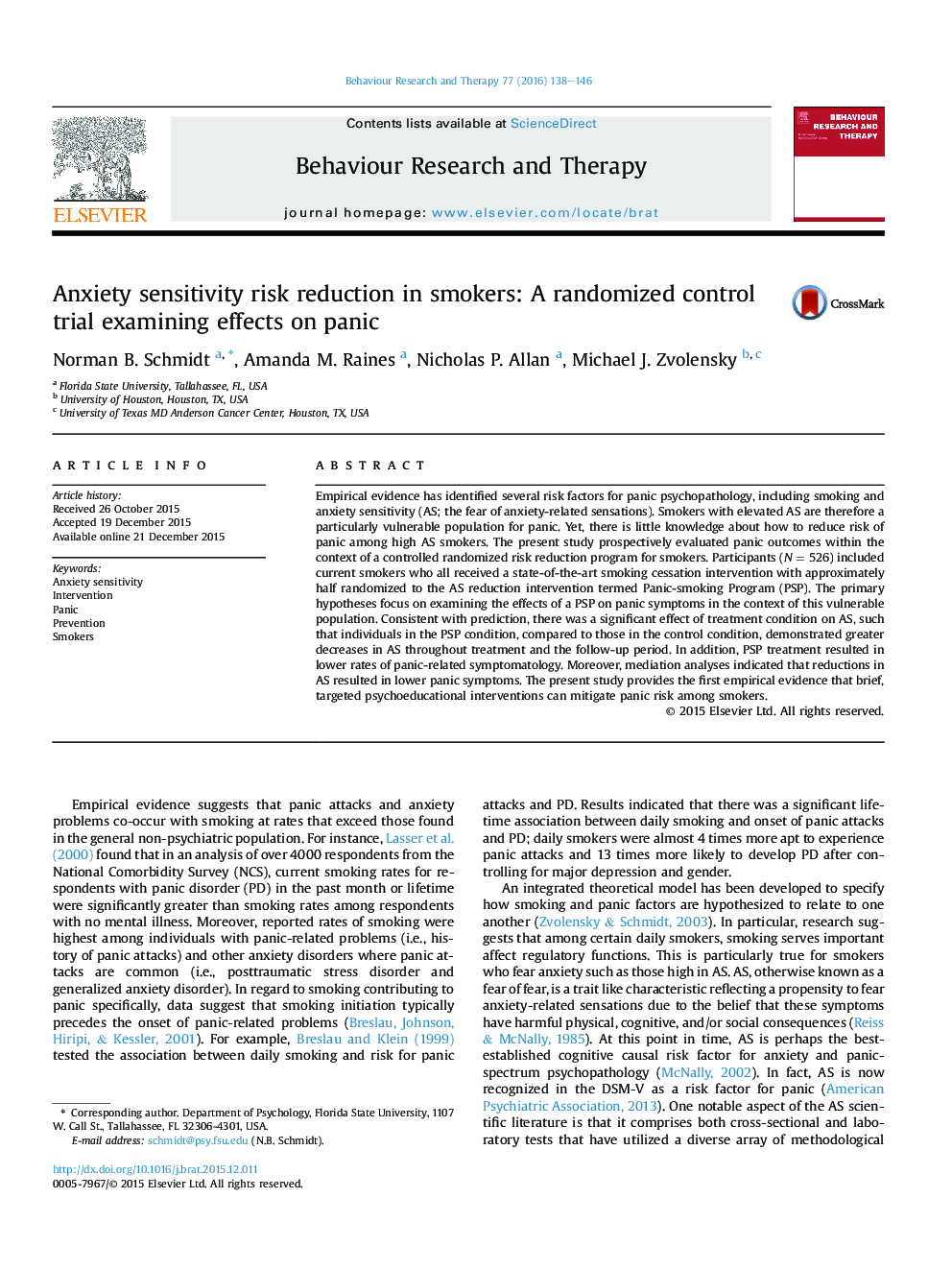| Article ID | Journal | Published Year | Pages | File Type |
|---|---|---|---|---|
| 901798 | Behaviour Research and Therapy | 2016 | 9 Pages |
•Risk factors for panic include smoking and anxiety sensitivity (AS).•Yet, little is known about how to reduce risk of panic in high AS smokers.•Current study evaluated panic outcomes in among high AS smokers.•Significant main effect of treatment condition on AS and panic related symptoms.•Mediation analyses indicated that reductions in AS resulted in lower panic symptoms.
Empirical evidence has identified several risk factors for panic psychopathology, including smoking and anxiety sensitivity (AS; the fear of anxiety-related sensations). Smokers with elevated AS are therefore a particularly vulnerable population for panic. Yet, there is little knowledge about how to reduce risk of panic among high AS smokers. The present study prospectively evaluated panic outcomes within the context of a controlled randomized risk reduction program for smokers. Participants (N = 526) included current smokers who all received a state-of-the-art smoking cessation intervention with approximately half randomized to the AS reduction intervention termed Panic-smoking Program (PSP). The primary hypotheses focus on examining the effects of a PSP on panic symptoms in the context of this vulnerable population. Consistent with prediction, there was a significant effect of treatment condition on AS, such that individuals in the PSP condition, compared to those in the control condition, demonstrated greater decreases in AS throughout treatment and the follow-up period. In addition, PSP treatment resulted in lower rates of panic-related symptomatology. Moreover, mediation analyses indicated that reductions in AS resulted in lower panic symptoms. The present study provides the first empirical evidence that brief, targeted psychoeducational interventions can mitigate panic risk among smokers.
